POWERED BY THE SUN
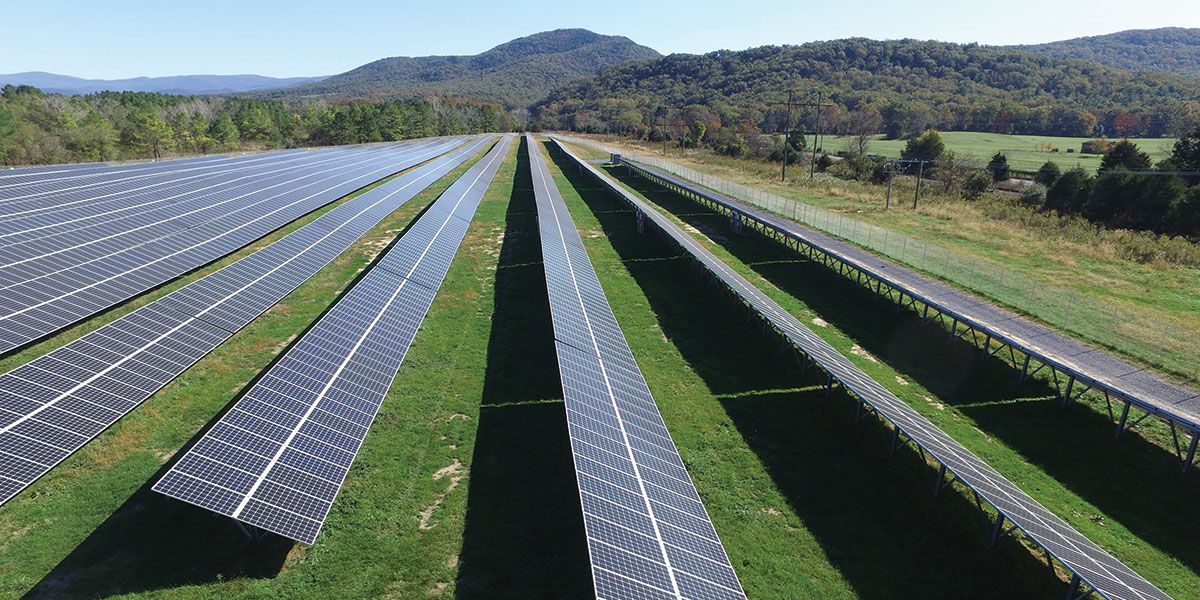
Photo: Regional Solar Farm, Courtesy of Dominion Energy
A Look at Solar Today and for the Future
Skip and Vickie Larrington began seriously considering solar energy for their Scruggs Road home in Moneta in early 2018. Vickie insisted that their collection panels not be visible from the water. That allowed for 45 southeast-facing panels to be installed on the roof — not the ideal straight-south orientation, but sufficient, they were told, to generate 85 percent of their power needs. That would yield a return of their investment, roughly $20,000 after federal tax credits, in about 10 years.
That projection was spot-on the first year. But the couple then wisely invested in LED bulbs for 25 overhead can lights in their main living areas, reducing their annual power demand by about 15 percent. “That has enabled us to solar-generate power equal to our full annual consumption each year since,” Skip says.
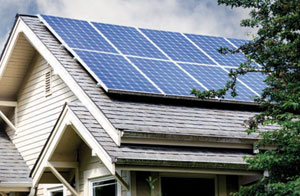 While the use of solar power accounts for just a small percentage of the electricity used in American homes, that number continues to rise. A 2022 Pew Research Center survey found that “8 percent of U.S. homeowners said they have already installed solar panels and an additional 39 percent have given serious thought to it in the past year.” According to MarketWatch, “More than one in seven U.S. homeowners will have solar panels on their roof by 2030.”
While the use of solar power accounts for just a small percentage of the electricity used in American homes, that number continues to rise. A 2022 Pew Research Center survey found that “8 percent of U.S. homeowners said they have already installed solar panels and an additional 39 percent have given serious thought to it in the past year.” According to MarketWatch, “More than one in seven U.S. homeowners will have solar panels on their roof by 2030.”
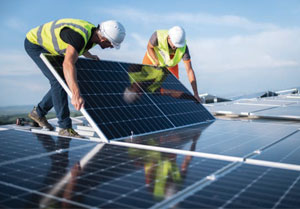 The Larringtons’ set-up with their power supplier, American Electric Power (AEP), is a net metering system, meaning that the utility supplements the power produced by their solar system as needed (during a string of cloudy days, for example). Shorter daylight, cold weather days of winter and air-conditioned days of mid-summer also require more energy than the solar system can produce. It’s averaged out at the end of an operational year to determine whether they owe anything to AEP, which does not “pay them back” for any excess they may have generated. The utility also charges them $9 per month for the net-metering billing process that keeps track of it all. Skip keeps records, too, logging daily the kilowatts used vs. those the solar system has produced. Not really necessary, but he’s one of those “Type A” engineers.
The Larringtons’ set-up with their power supplier, American Electric Power (AEP), is a net metering system, meaning that the utility supplements the power produced by their solar system as needed (during a string of cloudy days, for example). Shorter daylight, cold weather days of winter and air-conditioned days of mid-summer also require more energy than the solar system can produce. It’s averaged out at the end of an operational year to determine whether they owe anything to AEP, which does not “pay them back” for any excess they may have generated. The utility also charges them $9 per month for the net-metering billing process that keeps track of it all. Skip keeps records, too, logging daily the kilowatts used vs. those the solar system has produced. Not really necessary, but he’s one of those “Type A” engineers.
Plan your solar investment with our solar panel cost calculator, designed to provide you with an accurate estimate of potential savings and costs.
See a step-by-step guide to going solar in our infographic below.
A few local companies specialize in turning solar power into electricity for our homes and offered their insights.
Assessing the situation
Affordable Energy of Madison Heights has been serving this area with residential and commercial solar installations since 2010. Office Manager Rhonda Guill says their policy is to conduct a thorough analysis of a customer’s energy usage requirements, starting with a review of recent electric bills, before recommending a plan for supplemental solar power.
“Best advice I can give to anyone considering solar is to not be taken in by someone who shows up unannounced and promises to have your home running on solar power in a couple of weeks. A proper analysis, permitting, ordering the proper equipment and installation will take two to three months if done properly and in compliance with your energy supplier’s requirements.”
Guill notes the common misconception that solar panels will free homeowners from concern about power outages: “If you are tied to the grid, that’s where your power originates. To have back-up power when the grid goes down, you would need to install a solar-charged battery back-up system to supply emergency power, much like a gas generator.
“Battery storage systems, while able to provide homeowners with peace of mind, are expensive and difficult to justify,” she adds.
In many cases, a portable gas generator or a professionally-installed wired-in emergency generator can meet the need for emergency power to keep food from spoiling, light a few critical lights and allow internet access. Remember, you will also need to budget for the generator and installation.
HOW TO GO SOLAR
![]() 1 Choose an installer. Research or ask for recommendations to help you decide.
1 Choose an installer. Research or ask for recommendations to help you decide.
 2 Make sure your roof can support solar panels. A solar installer, roofing expert such as a Roofing Contractor or structural engineer can help you determine your roof’s solar suitability.
2 Make sure your roof can support solar panels. A solar installer, roofing expert such as a Roofing Contractor or structural engineer can help you determine your roof’s solar suitability.
 3 Determine your home’s solar potential. Aside from your roof, your home’s solar potential depends on its location, its position in relation to the sun, how much shade it gets and the type of system you choose.
3 Determine your home’s solar potential. Aside from your roof, your home’s solar potential depends on its location, its position in relation to the sun, how much shade it gets and the type of system you choose.
![]() 4 Calculate electricity needs. Review previous electricity bills to figure out how much power you need annually and seasonally.
4 Calculate electricity needs. Review previous electricity bills to figure out how much power you need annually and seasonally.
 5 Evaluate finance options. You can buy or lease a system. Buyers can purchase or obtain a solar loan. Buyers also receive solar tax credits and incentives.
5 Evaluate finance options. You can buy or lease a system. Buyers can purchase or obtain a solar loan. Buyers also receive solar tax credits and incentives.
 6 Obtain permits and schedule inspections. Give your installer the information they need to obtain permits and arrange inspections that the local government requires.
6 Obtain permits and schedule inspections. Give your installer the information they need to obtain permits and arrange inspections that the local government requires.
Source: U.S. Department of Energy
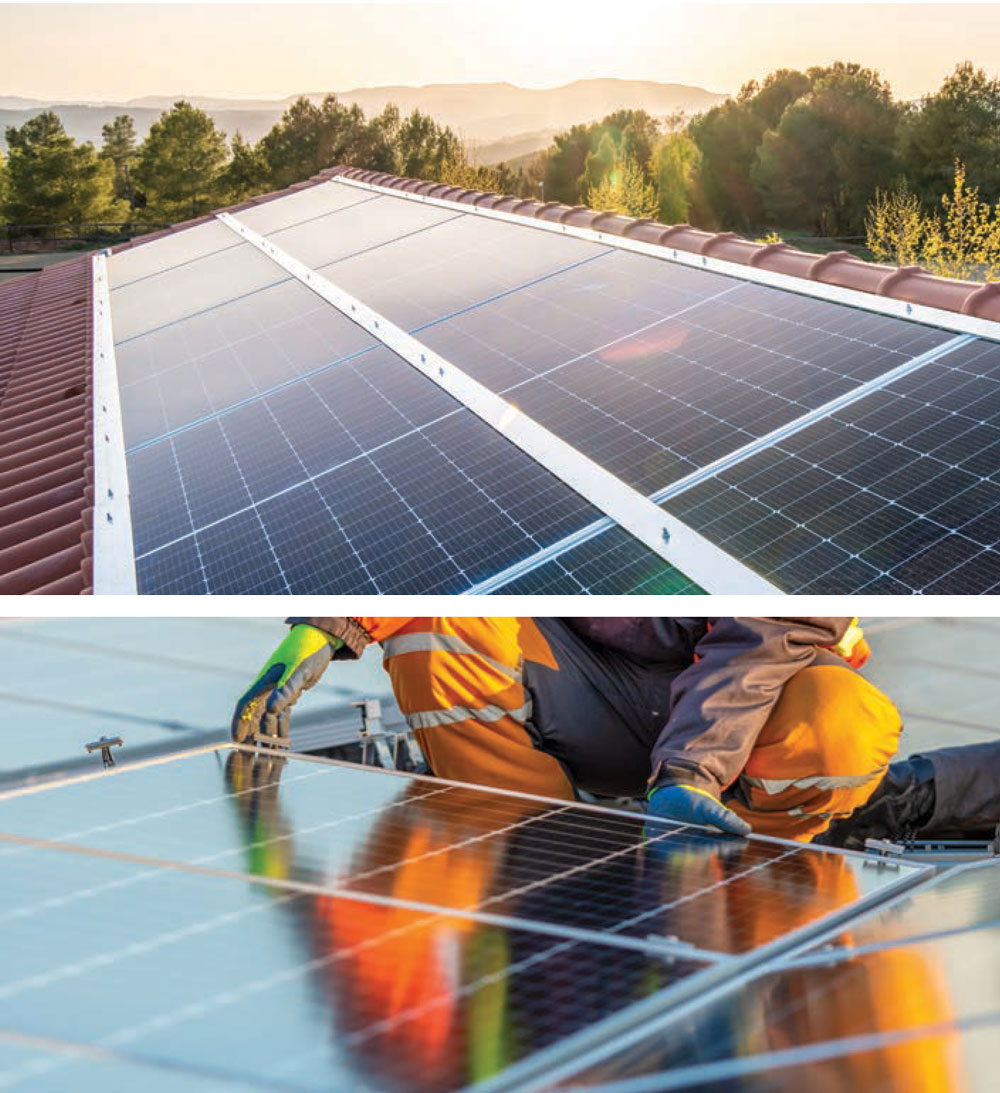 The bigger picture
The bigger picture
Corey Argentino, owner and CEO of Earth Right in Lynchburg, formed his company in 2019 to take a holistic approach to helping homeowners power into the future. Earth Right offers not just solar panel system installation, but also works with utilities to promote energy efficiency through education, LED technology, improved insulation and weatherization.
“Earth Right encourages people to conduct thorough research and, to that end, we’ve created an education and demonstration center at our offices on Timberlake Road in Lynchburg. There’s actually an energy efficient model home built right inside our building where people can view panel installations, metering systems — the whole nine yards — and get their questions answered factually.”
Argentino says one of the appeals of solar is that homeowners can protect a significant portion of their energy consumption against future utility rate increases. Their holistic approach helps reduce the number of solar panels needed to significantly impact utility bills, which is especially important for homes where roof space is limited and sun exposure is less than ideal.
The Tax Benefit
“The Residential Clean Energy Credit equals 30 percent of the costs of new, qualified clean energy property for your home installed anytime from 2022 through 2032. The credit percentage rate phases down to 26 percent for property placed in service in 2033 and 22 percent for property placed in service in 2034. You may be able to take the credit if you made energy-saving improvements to your home located in the United States.”
— Internal Revenue Service
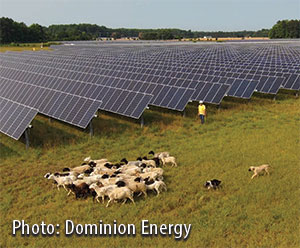 Looking to the future
Looking to the future
What does the future look like for residential solar? In a word: “Booming!” Over the next 10 years, the solar gigawatts being generated in the United States are expected to grow exponentially as panel prices drop and efficiency improves. Some analysts, however, are concerned that technology improvements will cause many homeowners to upgrade their original panels before the purported 30-year lifespan runs out, leading to burgeoning amounts of environmentally hazardous materials. Additionally, as the adoption of solar technology increases, the demand for Solar Repair Houston services is also expected to rise, ensuring that older systems are maintained and any upgrades are handled responsibly.
What about homes in locations or with roof designs that do not allow for solar panel installation? According to Tim Eberly of Dominion Energy, power suppliers such as Dominion are increasingly offering “shared” or “community” solar programs. For Dominion customers, that means choosing to have all or part of their payments for home electricity go directly to new solar energy development in Virginia. Thus, nearly any homeowner can join the solar power revolution! Ask your energy provider if such programs exist in your area. ✦
battery storage systems, federal tax credits, panel installations, residential solar, solar energy, solar gigawatts, solar panel system installation, solar power







